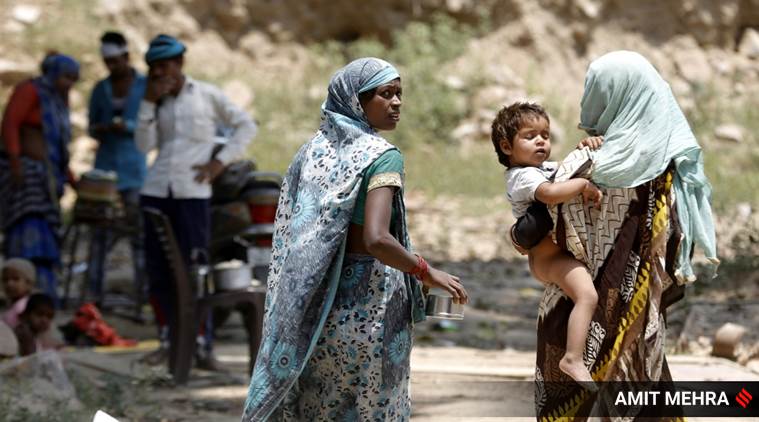
The Indian Express
Covid-19 has made migrant workers’ plight, state apathy visible
It’s only now, with the images we see everywhere, that we have begun to see them: An exhausted child asleep on his mother’s suitcase as she drags it along, a young man cradling his friend as he breathes his last after walking hundreds of miles.
by Anil DharkerHow can so many be so invisible? All around us, in our great metropolises, we see cranes on the top of buildings stealthily climbing skywards but we do not see the workers inside. At the important crossroads and chowks of our cities every morning, hordes of young men gather — masons, carpenters, painters — waiting for a call to work, blended into the landscape. On every street, yet others come to their claimed spots in the morning, carrying their trade on their heads and shoulders — from bhel puri to vegetables. They return home, their daily wage earned, in the evening. We don’t see them either.
Yet, there are millions of them.
A widely-quoted figure based on the 2011 census and on NSSO (National Sample Survey Office) data, asserts there are 65 million inter-state migrants, of which a third are workers — so around 22 million. By conservative estimates, 30 per cent of these depend on daily work, and an equal number are employed on a regular basis, but in the informal sector. Add street vendors, and you get. no one knows how many. And no one cares.
It’s only now, with the images we see everywhere, that we have begun to see them: An exhausted child asleep on his mother’s suitcase as she drags it along, a young man cradling his friend as he breathes his last after walking hundreds of miles. We hear of, but luckily do not see, the expectant mother in full-term and walking nevertheless, who delivers her child, and then walks on again. We hear of, but can scarcely believe, as wave after wave of the poor — with only rotis and chutney to sustain them — undertake journeys of a thousand miles on foot, to reach home.
You and I see them now when, for many, it’s too late. Didn’t the politicians who go to them for their votes not see them before this? When the PM announced the first lockdown on March 24, he gave about three-and-a-half hours notice to India, including its chief ministers. The Railways, which carry 23 million passengers per day, cancelled all trains. The migrants had rushed towards the railway and bus stations but the gates were shut by then.
Right from the start, the fight against COVID-19 has suffered from the invisibilising of the poor. When the PM asked people to fight the virus with thaalis and light from their balconies, he forgot that the poor don’t have balconies. When social distancing was made a central point of the campaign, the impossibility of it in slums was overlooked. Worst of all, was the lack of the anticipation that without work, savings or food, migrant workers and their families would want, and attempt, to rush home. When the rush could no longer be ignored, it still took five weeks to announce the resumption of trains.
But even this was conditional for migrants: Their origin state (say Maharashtra), should first want the workers to leave, and then the destination state (say UP), should agree to have them. Such an arrangement was bound to fail, and it did. In announcing the lockdown, the central government had invoked the Disaster Management Act, which overrode state governments’ powers: But when it came to the migrants’ transportation, suddenly, without notice, why was the onus transferred to the states? The chaos this caused could be gauged from the desperate crowds at Dadar and Ghaziabad, and other stations. So, again the decision was reversed, but only on May 19. Further, it has taken the central government 53 whole days to set up NMIS (National Migrant Information System), an online dashboard for the states to put up figures so that they can monitor the movement of people. Why did it take 50 days to announce food supplements for 80 million Indians who are not part of the rationing system?
If policy-makers had abandoned their middle-class value systems and thought of our country’s invisible multitudes in time, they would have commandeered the whole rail system on a war footing, organised buses and trucks, food stations en route, and put cash and essential rations in each starving hand. But how could they, when the hand was invisible to them?
Dharker is a writer and columnist